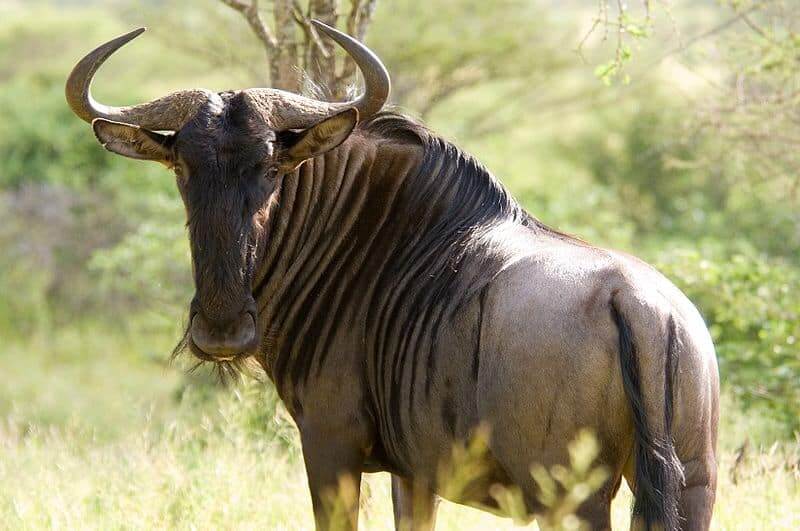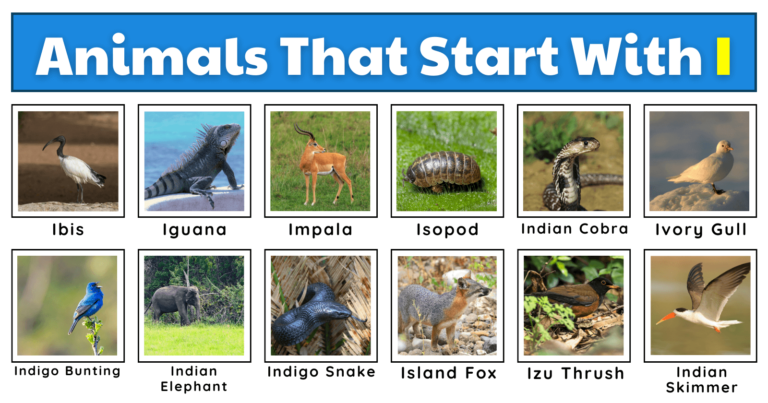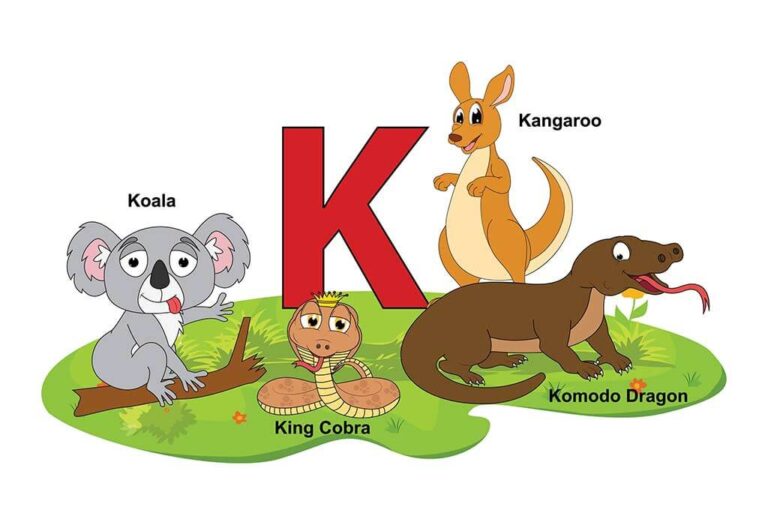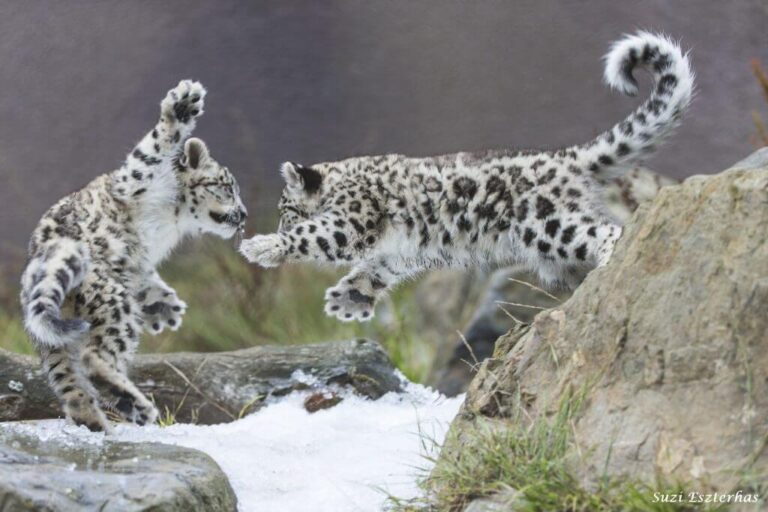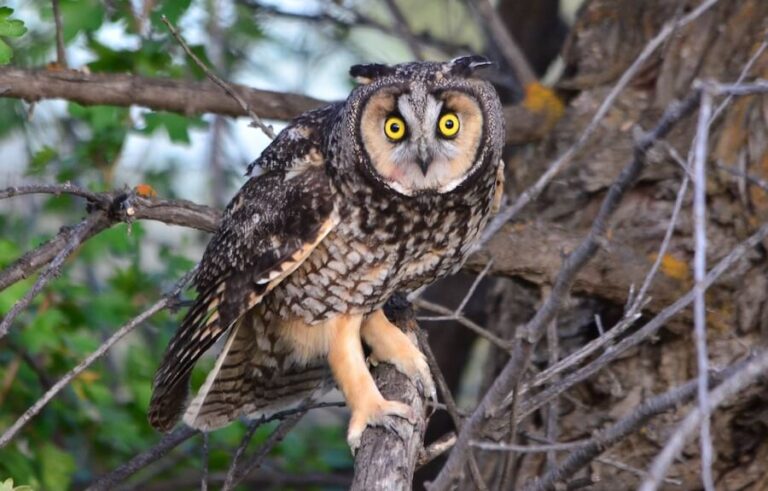Wildebeest – The Great Migrator
The wildebeest, often known for its impressive annual migration across East Africa, is a resilient herbivore vital to the grassland ecosystems of the savannas. This magnificent species, sometimes called the gnu, plays an essential role in maintaining the balance of the African landscape. Below, we delve into the wildebeest’s fascinating world, from its scientific classification to its role in human culture.
Contents
Scientific Classification
- Kingdom: Animalia
- Phylum: Chordata
- Class: Mammalia
- Order: Artiodactyla
- Family: Bovidae
- Genus: Connochaetes
- Species: Connochaetes taurinus (Blue Wildebeest) and Connochaetes gnou (Black Wildebeest)
The genus Connochaetes encompasses two species: the blue wildebeest, which is more widespread, and the black wildebeest, found primarily in southern Africa.
Physical Characteristics

Wildebeest have a sturdy, muscular build with distinctive physical traits:
- Size: Adult wildebeest can weigh between 260 and 600 pounds (120 to 272 kg), standing about 4.5 feet tall at the shoulder.
- Color: Blue wildebeests typically have a dark greyish-blue coat with darker vertical stripes along their sides, while black wildebeests have a brownish-black coat.
- Horns: Both males and females have curving horns, with males’ horns being thicker and more pronounced. Horns can grow up to 33 inches long.
- Facial Features: Wildebeest have large heads, a characteristic beard, and a thick, flowing mane on the blue wildebeest. Black wildebeests have a bushy tail and prominent facial markings.
Habitat
Wildebeest thrive in savannas, grasslands, and open woodlands, particularly in:
- Range: East and southern Africa, including Tanzania, Kenya, Botswana, and South Africa.
- Ecosystem Preferences: They prefer open grasslands, where they graze on abundant grasses. Blue wildebeests migrate across vast plains, while black wildebeests tend to inhabit grasslands in more arid regions.
Behavior
Social Structure
Wildebeests are highly social animals, living in large herds that can number thousands. Their grouping offers protection from predators and enhances their migratory success. Smaller bachelor herds consist of males, while larger herds are mixed or primarily composed of females and their offspring.
Migration
The wildebeest is famous for its Great Migration, a massive annual movement of over 1.5 million wildebeest across East Africa, specifically in the Serengeti and Maasai Mara ecosystems. This migration, driven by seasonal rains and food availability, sees them travel over 1,000 miles searching for fresh grass and water. The journey is difficult, with many falling victim to predators like lions, crocodiles, and cheetahs.
Communication
Wildebeests communicate through various sounds, including low grunts and loud snorts. They use visual signals and body postures to express alarm, establish dominance, or maintain herd cohesion.
Diet
Wildebeests are herbivores, primarily grazing on short, fresh grasses. They are:
- Grazers: Preferring the tender shoots of grasses, wildebeests feed primarily in the early morning and late afternoon.
- Water Dependence: These animals require regular access to water, especially during the dry season, making them frequent visitors to rivers and waterholes.
Reproduction
Wildebeests have a synchronized breeding season, known as the “rut,” which occurs towards the end of the rainy season, typically between May and June. Here’s a closer look at their reproductive behavior:
- Gestation: Females have a gestation period of approximately eight months, typically giving birth to a single calf.
- Birthing Season: In January and February, most calves are born around the same time, often within a two- to three-week window. This mass birthing overwhelms predators and ensures many young survive.
- Calf Development: Wildebeest calves are precocial, meaning they can stand and run within minutes of being born. This agility is crucial for avoiding predators.
Predators
Wildebeests have many natural predators, including:
- Lions: One of the primary predators, lions frequently hunt wildebeests, especially targeting the young, sick, or isolated herd members.
- Crocodiles: During migration, wildebeests must cross rivers, making them vulnerable to attacks by Nile crocodiles.
- Cheetahs and Hyenas: These swift carnivores often prey on calves or weak individuals.
- Wild Dogs: African wild dogs may target smaller or less fit wildebeests during coordinated pack hunts.
Their large numbers and herd structure provide some protection, but migration exposes them to significant predation risks.
Conservation Status
According to the International Union for Conservation of Nature (IUCN), the blue wildebeest is classified as a species of Least Concern due to its large population size and extensive range. The black wildebeest, however, was once endangered but has made a successful recovery through conservation efforts. It is now listed as Near Threatened, with populations mainly in protected areas and private reserves in South Africa.
Threats to wildebeest populations include habitat fragmentation due to agriculture, fencing of migratory routes, and illegal hunting.
Evolutionary History
The wildebeest is believed to have evolved in the savannas of Africa around 2.5 million years ago. Its ancestors were well-adapted to the open grasslands and developed traits, such as migration, to cope with the cyclical availability of resources. The wildebeest’s migration patterns have likely influenced other species’ behaviors, such as predators and scavengers.
Interesting Facts
- Largest Mammal Migration: The Great Migration of wildebeests is Earth’s largest terrestrial mammal migration.
- Speed: Wildebeests can run up to 50 miles per hour, an essential survival skill when escaping predators.
- Migratory Instinct: Even if prevented from following traditional routes, wildebeests will still attempt to migrate, highlighting their strong instinctual drive.
Relationship with Humans
Wildebeests have had an interesting relationship with humans throughout history:
- Tourism: The Great Migration is one of the most spectacular wildlife events, attracting thousands of tourists to Kenya and Tanzania annually. Ecotourism surrounding wildebeest migrations generates significant revenue for local economies.
- Conservation: Local communities, governments, and international organizations have invested in protecting wildebeest habitats and understanding the importance of these animals to ecosystems and economies.
- Cultural Significance: In some African cultures, the wildebeest is a symbol of endurance and adaptability. Historically, they have also been hunted for their meat, although this practice has reduced significantly due to conservation efforts.
Conclusion
The wildebeest symbolizes Africa’s wild, open savannas and is a cornerstone of the continent’s grassland ecosystems. Their dramatic migrations, which fuel the food chain for numerous predators and scavengers, showcase Africa’s intricate web of life. While they face challenges from human activity and environmental changes, ongoing conservation efforts aim to preserve the future of the wildebeest and its crucial role in the natural world.
- Are Rottweilers Good With Kids? Reasons & Training Tips - 17 September 2025
- How Long Are Dogs Pregnant: Complete Guide - 16 September 2025
- German Shepherd Doberman Mix: Info, Pictures, Care & More - 11 September 2025

